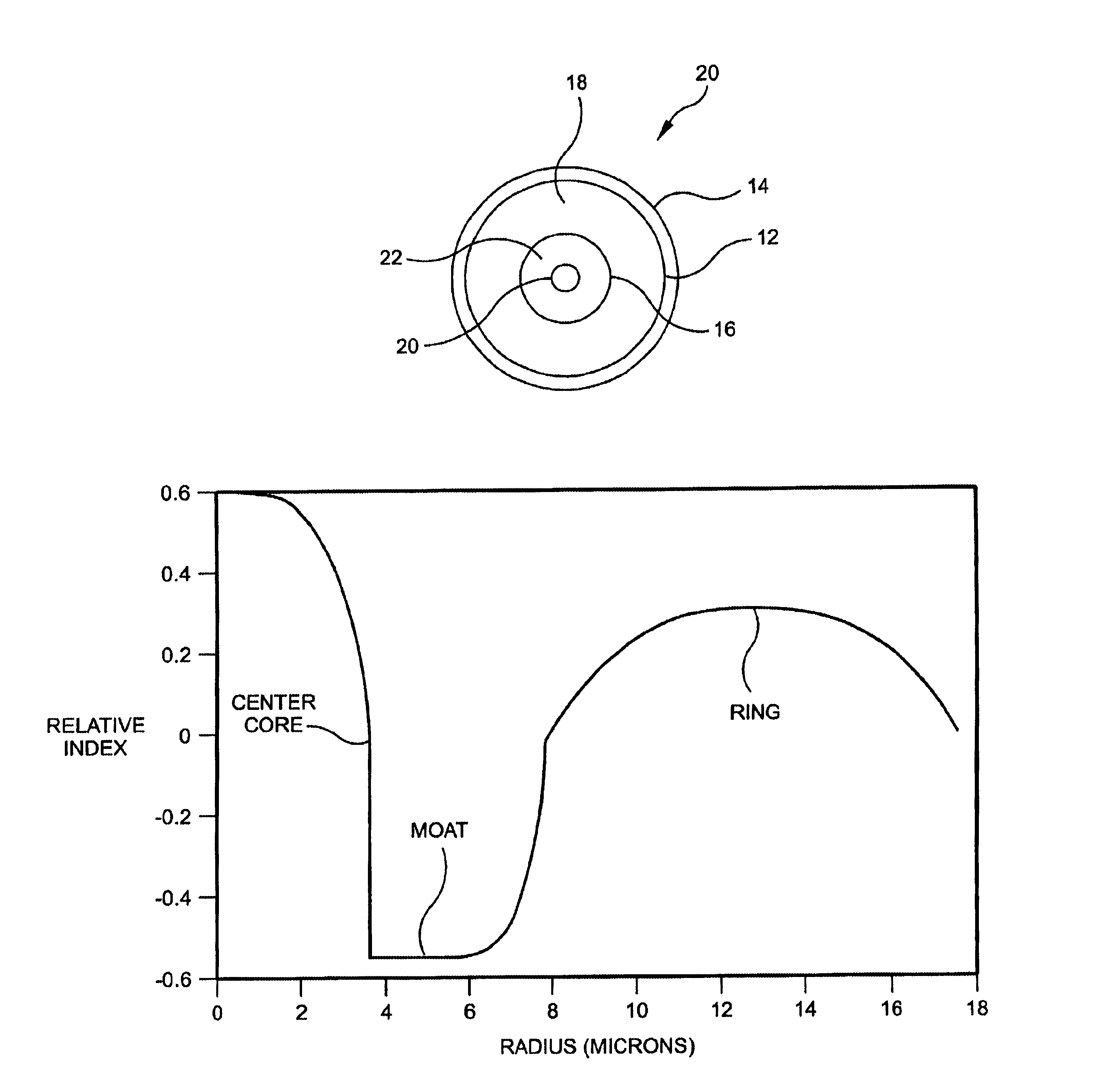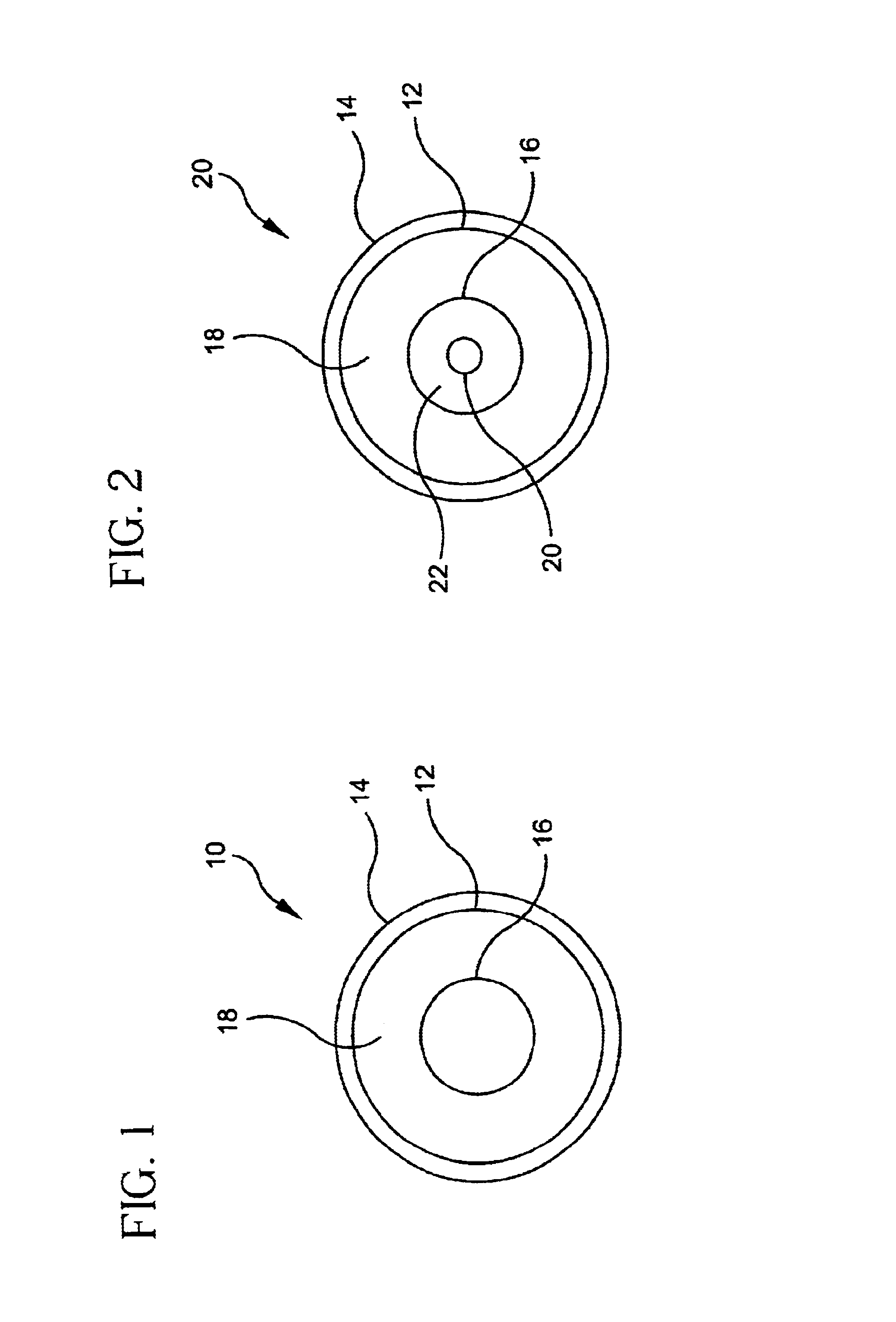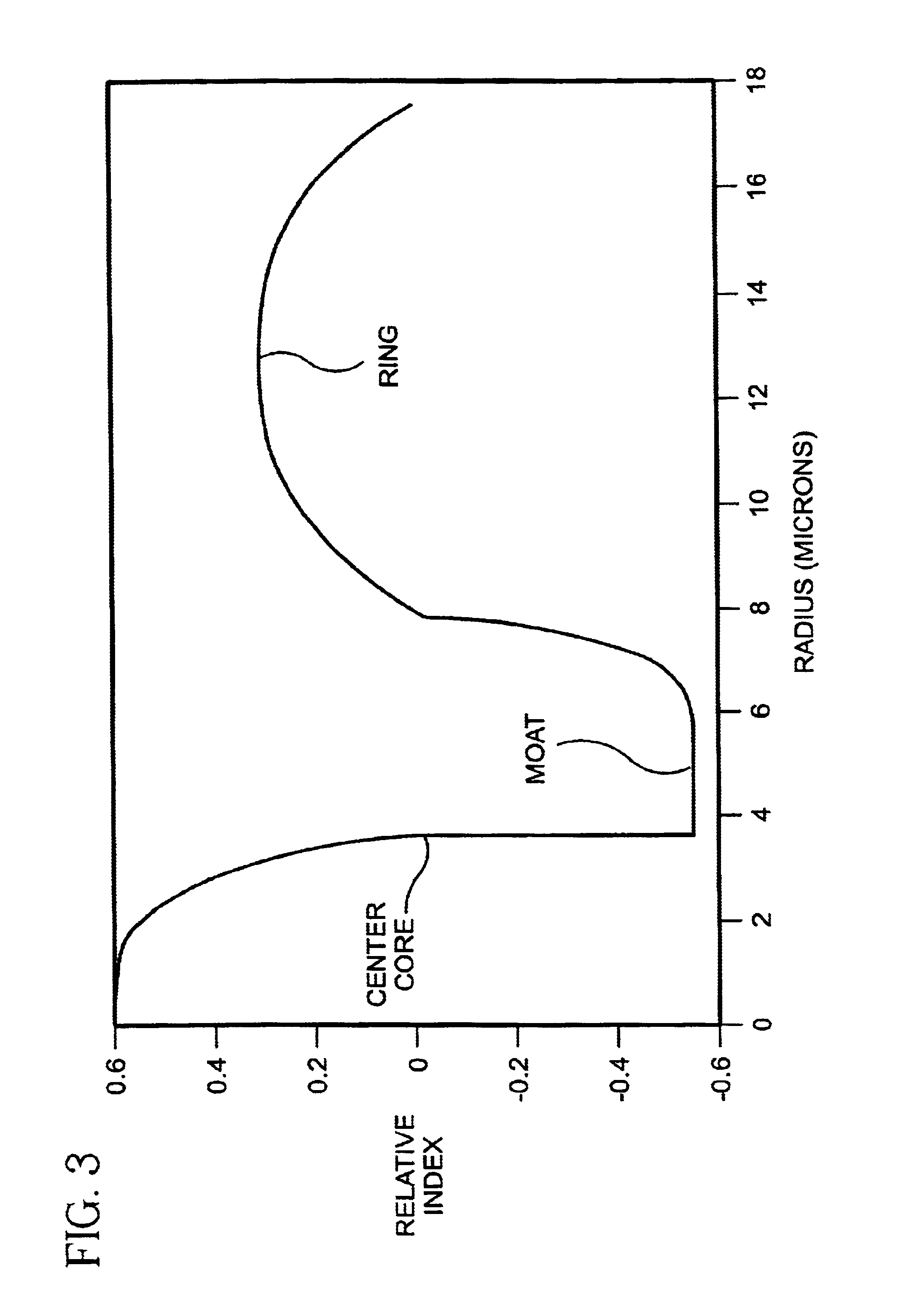Fiber profile for achieving very high dispersion slope
a fiber profile and optical waveguide technology, applied in the field of fiber profiles for achieving very high dispersion slope, can solve the problems of difficult design of dcf to compensate for the low value of a leaf, degrading the optical signal transmission of nonlinear optical effects, and the lack of acceptance of dual fiber dispersion compensation to date, so as to achieve full dispersion and dispersion slope compensation, and high negative dispersion , the effect of increasing the flexibility of choosing such
- Summary
- Abstract
- Description
- Claims
- Application Information
AI Technical Summary
Benefits of technology
Problems solved by technology
Method used
Image
Examples
example 1
[0041]FIG. 3 is a relative index profile of the core region for Example 1 of the present invention according to the second embodiment of the high negative dispersion slope waveguide. In Example 1, the central segment, moat segment and ring segment outer radii are about 4, 8 and 18 microns, respectively. In this first example, the relative indices of the central segment Δc%, moat segment Δm% and ring segment ΔT% are about 0.6%, −0.55% and 0.3%, respectively.
example 2
[0042]FIG. 4 shows the relative index profile of the core region for Example 2. In Example 2, the central segment, moat segment and ring segment outer radii are about 4, 10 and 14 microns, respectively. In this second example, the relative indices of the central segment Δc%, moat segment Δm% and ring segment ΔT% are about 0.6%, −0.55% and 0.4%, respectively.
example 3
[0043]FIG. 5 shows the relative index profile of the core region for Example 3. In Example 3, the central segment, moat segment and ring segment outer radii are about 4, 9 and 22 microns, respectively. In this third example, the relative indices of the central segment Δc%, moat segment Δm% and ring segment ΔT% are about 0.6%, −0.55% and 0.3%, respectively.
[0044]Table I lists the dispersion, dispersion slope, effective area, and wavelength cutoff for the relative index profiles of the waveguides in Examples 1 to 3.
[0045]
TABLE IDispersionDispersion slopeEffective areaCutoffProfile(ps / nm−km)(ps / nm2−km)(microns2)(microns)Exp. 1−126−1143.94.57Exp. 2−82−543.73.03Exp. 3−165−25.5547.835.02
[0046]As table 1 illustrates, the wavelength cutoff remains above 3 microns for all three examples. For typical fiber transmission applications, the transmission wavelength range is between approximately 1450 nm (1.45 microns) and 1700 nm (1.7 microns). Thus, for typical transmission applications, all thre...
PUM
 Login to View More
Login to View More Abstract
Description
Claims
Application Information
 Login to View More
Login to View More - R&D
- Intellectual Property
- Life Sciences
- Materials
- Tech Scout
- Unparalleled Data Quality
- Higher Quality Content
- 60% Fewer Hallucinations
Browse by: Latest US Patents, China's latest patents, Technical Efficacy Thesaurus, Application Domain, Technology Topic, Popular Technical Reports.
© 2025 PatSnap. All rights reserved.Legal|Privacy policy|Modern Slavery Act Transparency Statement|Sitemap|About US| Contact US: help@patsnap.com



